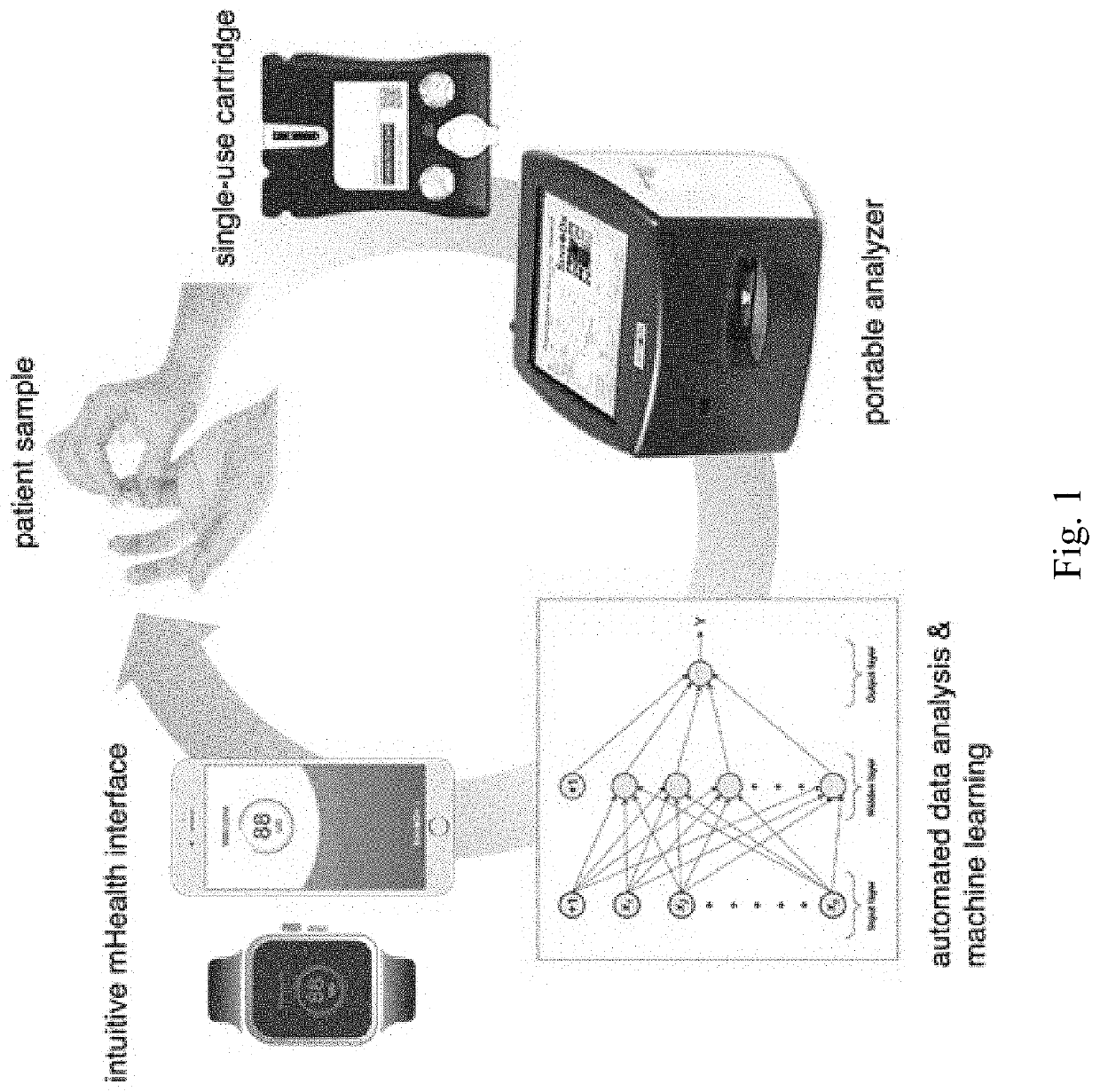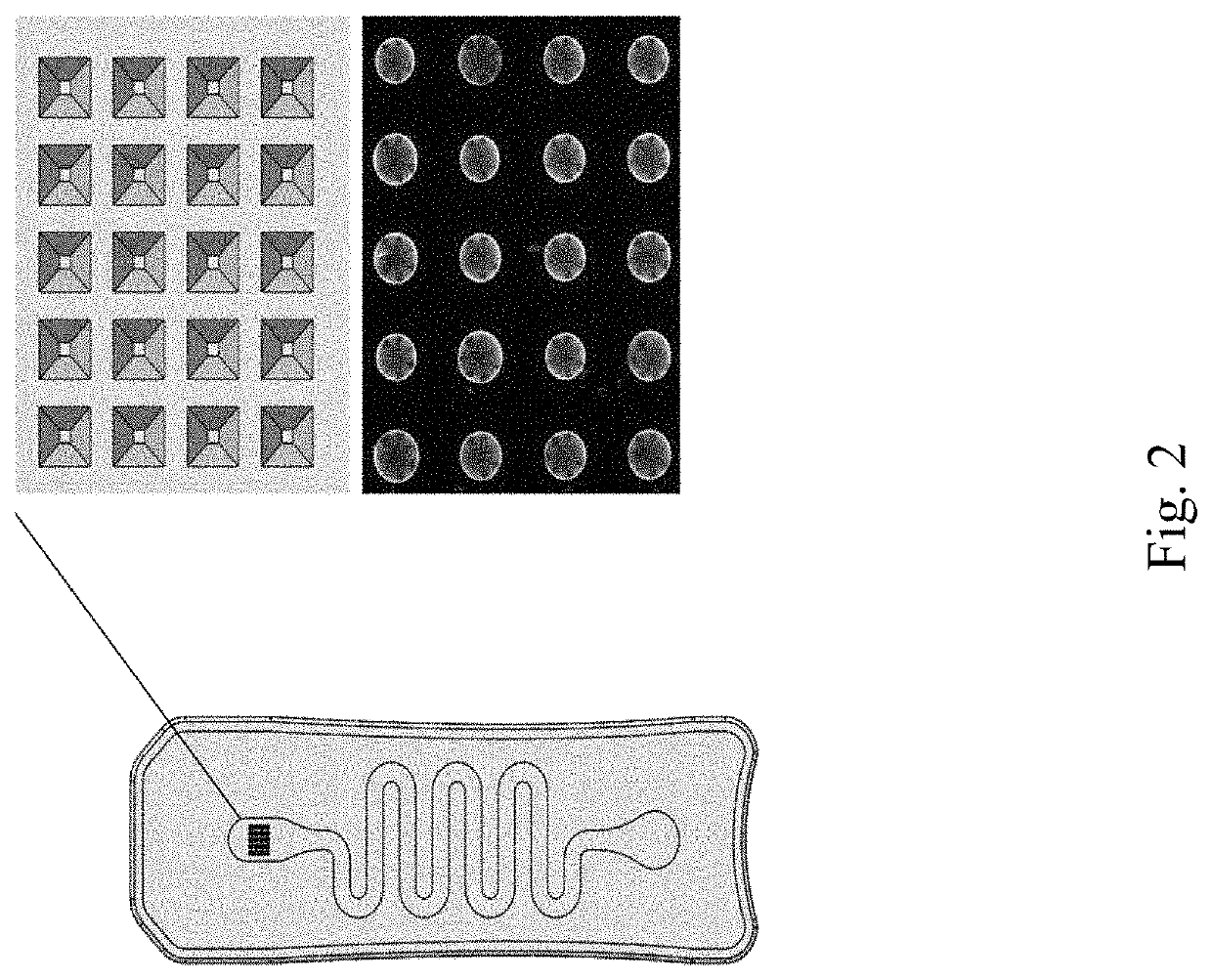System and Method for Disease Surveillance and Disease Severity Monitoring for COVID-19
a disease severity and disease technology, applied in the field of system and method for disease surveillance and disease severity monitoring of covid19, can solve the problems of large patient surge, large hospital workload, and expected substantial under-reporting of cases
- Summary
- Abstract
- Description
- Claims
- Application Information
AI Technical Summary
Benefits of technology
Problems solved by technology
Method used
Image
Examples
experimental examples
[0155]The invention is further described in detail by reference to the following experimental examples. These examples are provided for purposes of illustration only, and are not intended to be limiting unless otherwise specified. Thus, the invention should in no way be construed as being limited to the following examples, but rather, should be construed to encompass any and all variations which become evident as a result of the teaching provided herein.
[0156]Without further description, it is believed that one of ordinary skill in the art can, using the preceding description and the following illustrative examples, make and utilize the present invention and practice the claimed methods. The following working examples, therefore, specifically point out the preferred embodiments of the present invention, and are not to be construed as limiting in any way the remainder of the disclosure.
example 1
[0157]Managing COVID-19 with a Clinical Decision Support Tool in a Community Health Network: Algorithm Development and Validation
[0158]An integrated point-of-care COVID-19 Severity Score and CDSS has been developed which combines multiplex biomarker measurements and risk factors in a statistical learning algorithm to predict mortality with excellent diagnostic accuracy (McRae M P, et al., 2020, Lab Chip. 20(12):2075-85). The COVID-19 Severity Score was trained and evaluated using data from 160 hospitalized COVID-19 patients from Wuhan, China. The COVID-19 Severity Scores were significantly higher for patients who died as compared with patients who were discharged with median (interquartile range [IQR]) scores of 59 (40-83) and 9 (6-17), respectively, and area under the curve (AUC) of 0.94 (95% confidence interval [CI] 0.89-0.99).
[0159]The COVID-19 condition has caused and continues to cause significant morbidity and mortality globally. A validated tool to assess and quantify viral s...
example 2
[0190]Integrated AI and Point-of-Care Solutions for COVID-19 Screening
[0191]Close proximity to patients and frequent potential for viral exposure through aerosol-generating procedures makes dentistry one of the highest risk occupations amid the COVID-19 pandemic. With asymptomatic and presymptomatic cases serving as the main driving force for community spread, there remains concern that screening patients upon entry for symptoms and temperature may be inadequate to detect subclinical infection. Improved screening and diagnostic testing are critical to tracing and breaking the chain of transmission. The goal of this study is to develop an improved COVID-19 screening system, comprising predictive algorithms and point-of-care (POC) testing, that is appropriate for dental settings. A retrospective analysis of 2553 pre- and asymptomatic patients who were tested for SARS-CoV-2 by RT-PCR was conducted.
[0192]Pre-screening algorithms were developed to determine whether proceeding to a diagno...
PUM
 Login to View More
Login to View More Abstract
Description
Claims
Application Information
 Login to View More
Login to View More - R&D
- Intellectual Property
- Life Sciences
- Materials
- Tech Scout
- Unparalleled Data Quality
- Higher Quality Content
- 60% Fewer Hallucinations
Browse by: Latest US Patents, China's latest patents, Technical Efficacy Thesaurus, Application Domain, Technology Topic, Popular Technical Reports.
© 2025 PatSnap. All rights reserved.Legal|Privacy policy|Modern Slavery Act Transparency Statement|Sitemap|About US| Contact US: help@patsnap.com



